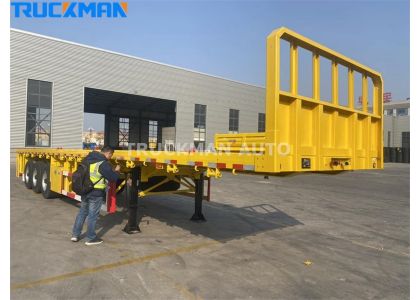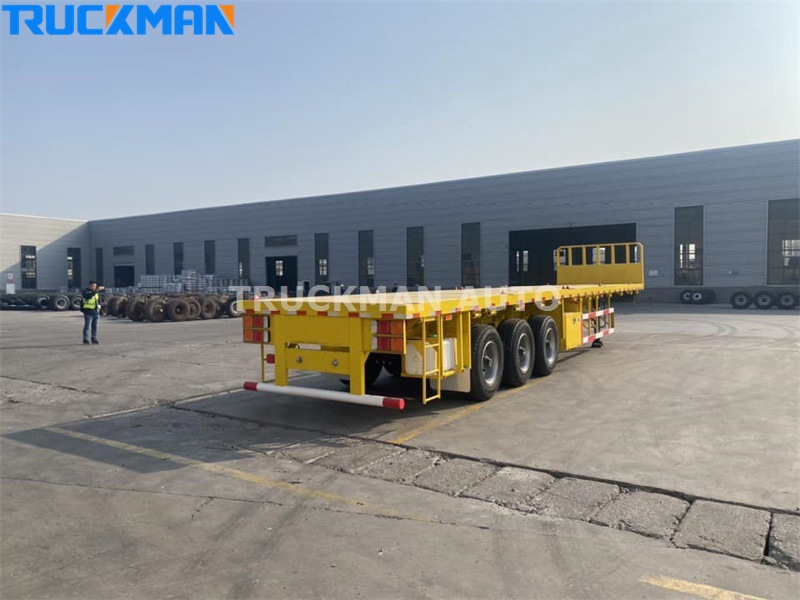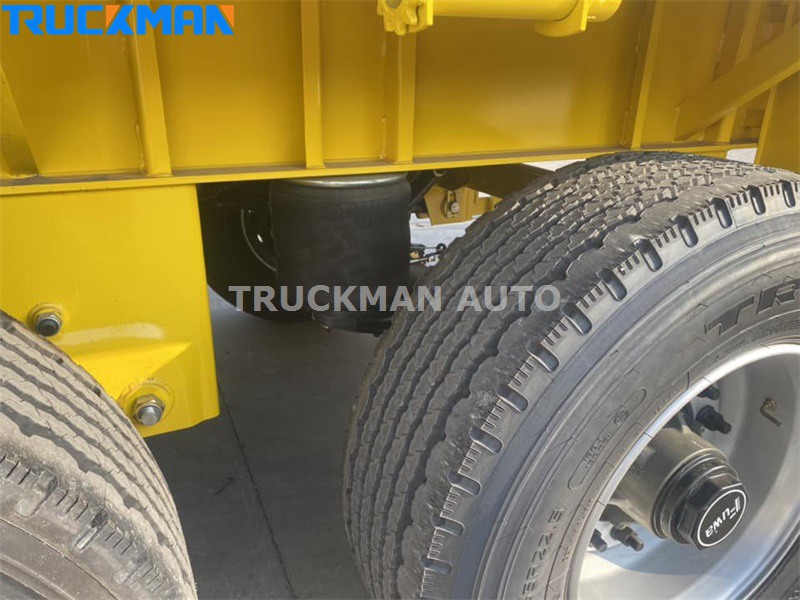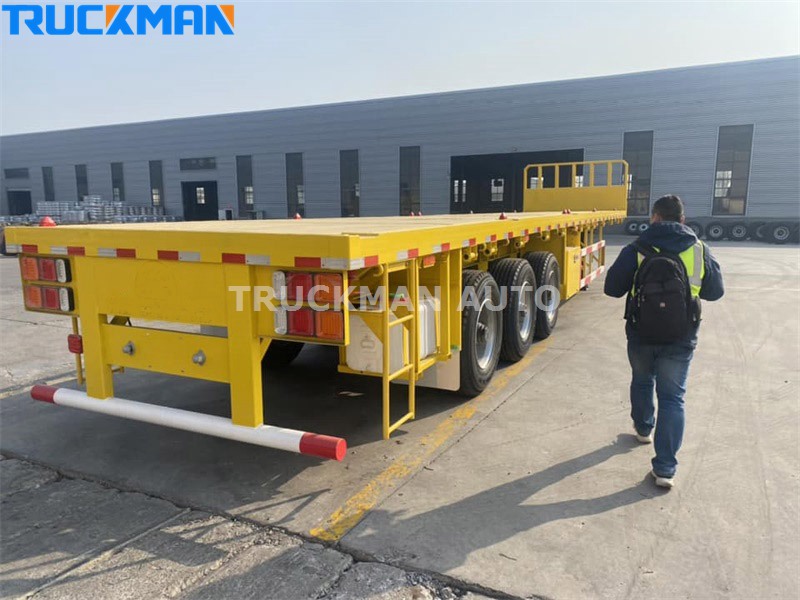
The customer from Zimbabwe found us through a friend's recommendation and inquired about the price of the semi-trailer. After communicating with the customer, we understand that the customer is used for container transportation. Therefore, we recommended the 50 Tons 3 Axle Container Flatbed Trailer to the customer. Our container flatbed semi-trailer is retrofitted with 12 container locks, which is suitable for transporting various types of containers. The customer is also very like satisfied with our recommendation, and immediately decided to buy from us. Now the customer has paid the deposit, the factory has begun production.

The 50 Ton container flatbed trailer crossmember is connected using multiple crossmembers that are securely welded to the longitudinal beams. The frame of the containerized flatbed semi-trailer provides a rigid and sturdy structure for securing the wheels, outriggers, floor or base, towing pins and suspension system. The chassis is made of high-strength structural materials, making it a rigid structure with good load-carrying capacity.

The 3 axle container flatbed trailer retrofitted with 12 container locks serves as a chassis lock for locking the trailer chassis to the container body. It is provided with an internal locking chamber. It may be formed by embedding locking corner slots at two rotatable separate positions, a shaft extension normally carried with a sleeve at one end and extending again into the container cavity at the other end, a sliding joint, connected to the sleeve to the shaft extension, and a security locking plate having an elongated shape passing through the shaft extension. The container can be secured to ensure goods safety.

Regarding routine weekly inspections of semi-trailers: check tire air pressure and adjust to tire manufacturer's recommended level; check tightness of tire screws; check brake system for air leaks and test to see if it can be braked; check looseness and tightness of all nuts and bolts and studs of the suspension; drain the air reservoirs and, for air chambers equipped with air suspensions, the air chambers; and check and make sure that outriggers are in good working order.
